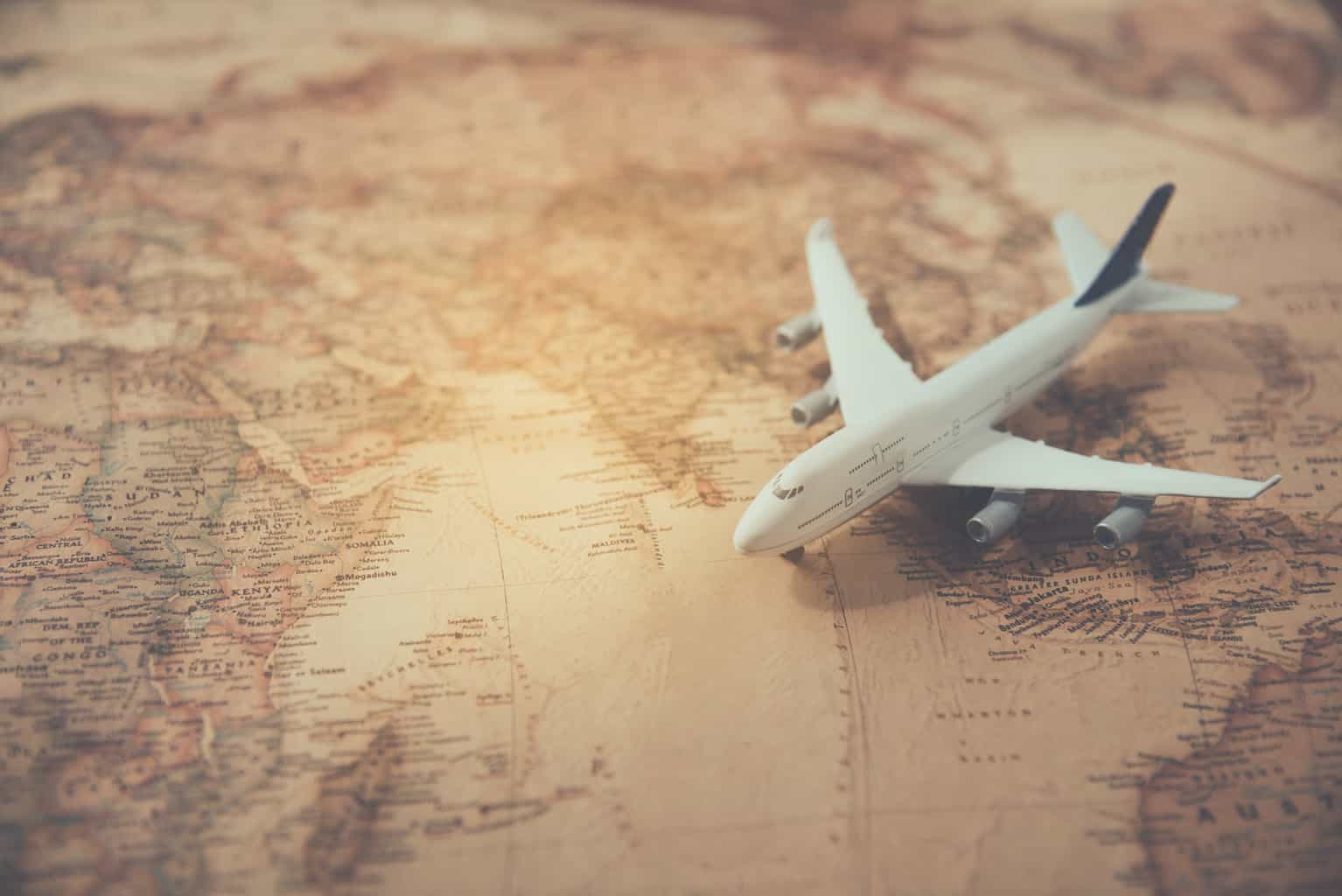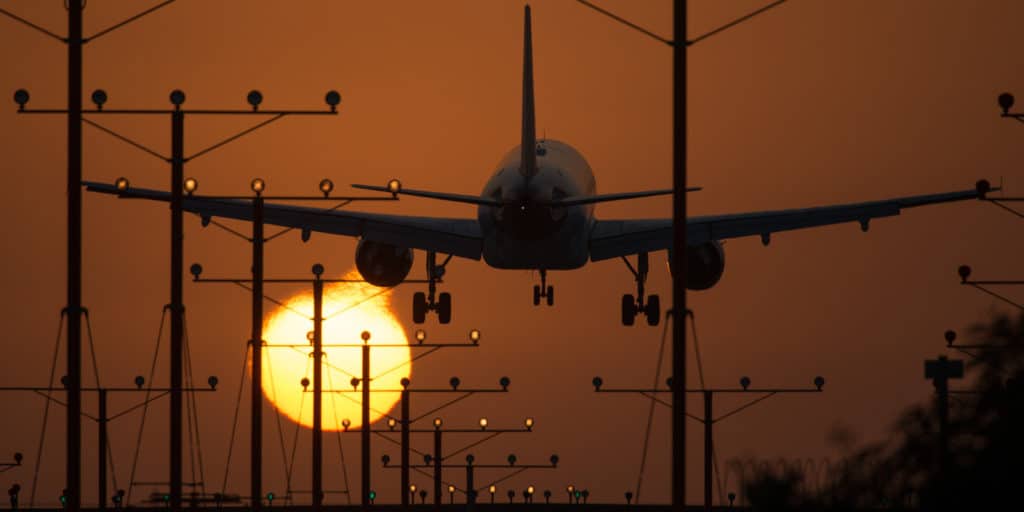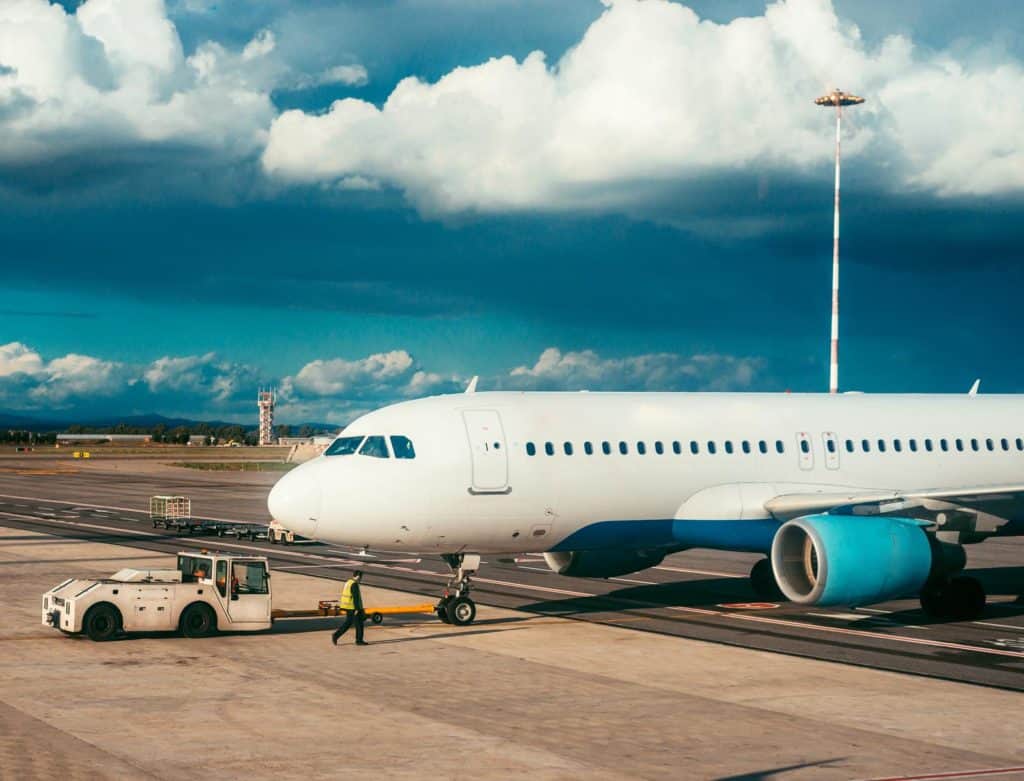Flights and Air Statistics: Interesting Facts & Awesome Tips

Updated On: November 08, 2023 by Rahma Ali
Whether you’re a nervous flyer or you love take-offs, there’s no denying that flying is pretty amazing. And when you start looking into the air statistics and facts about flights and air travel, it’s even more fascinating. So here are some interesting figures about air travel.
But why do you even care about these statistics? Indeed, when planning to travel on a budget, flights can be pretty frustrating because we all know that flights are always the most expensive part of travelling!
These figures will help you understand when and where you can travel.
Bounce: you’ll find some terrific tips before boarding the plane to guarantee the best experience ever.
Air Statistics: What You Need to Know
Many people experience some form of pain when travelling by plane. They remember the discomfort and sickness they went through the last time. But it should be part of the past because we have the information we need to take the best decision.
So, with more people flying than ever, it’s important to know some key air statistics. Let’s see what you need to know about flying:
- In 2021, the number of domestic and global flights around the world reached 22 million, showing a 3.2% up from the previous year (still 75% below the 2019 level). Otherwise, in 2019, the number was estimated at 42 million flights worldwide, transferring 4.5 billion passengers. (Source: The International Air Transport Association IATA)
- Only roughly 20% of the world’s population travelled by air. (Source: Boeing)
- The top domestic flights in 2021 were between Jeju and Seoul in South Korea. (Source: IATA)
- The domestic markets showed the strongest recovery among other air statistics in 2021, resulting in only 28.2% below the 2019 level, mainly in China and the USA. (Source: IATA)
- In 2021, the capacity (ASK) fell 65.3%, and the global load factor declined 24.0% points to 58.0% compared to 2019. (Source: The World Bank)
- The global air statistics of passenger traffic showed a 50% loss in 2021 compared to 2019. (Source: Statista)
- 2020 was the worst in history for the airline industry regarding finical performance, and travel demand since international and domestic travel declined by 75.6% and 48.8%, respectively. (Source: IATA)
- After the relaxation of travel restrictions, the rapid growth in demand has resulted in an unforeseen labour shortage for service providers such as airports and airlines. (Source: Airports Council International)
- The pandemic led to a steep decline in the annual growth of the global air industry during 2021, recording 46.77%. (Source: OAG)
- The aviation industry offers 87.7 million jobs worldwide, including airline and navigation services, transportation goods and airport operators. (Source: Statista)
- The air industry generated 5 million direct jobs, with 2.3 million people working at the airline and airports, producing $ 275 billion of the global GDP. (Source: The International Civil Aviation Organization ICAO)
- The USA air industry employs around 1,290,400 total employees, including 691,700 pilots. (Source: Federal Aviation Administration FAA)
- Global air travel increased dramatically over the last decade except during the COVID-19 pandemic, which affected the travel industry sharply. (Source: Statista)
- In 2019, the Asian pacific region ranked the highest in airline passenger traffic, achieving one-third of the global traffic. Also, it contains the busiest air routes worldwide. (Source: Statista)
- In 2021, the Asia-Pacific showed a 93.2% decline in terms of international traffic, which was the worst for any region. (Source: IATA)
- The pandemic cut the number of air passengers to 1.8 million and flights globally to 16.4 million. The Middle East was affected the most as seat capacity declined by % 64.5 compared to 2019. (Source: Statista)
- Governments worldwide have provided the aviation industry with over $240 billion in aid. (Source: IATA)
- Airline industry losses are expected to shrink to -$9.7 billion for a net loss margin of -1.2%. (Source: IATA)
- The total recovery in the air industry, which means reaching the pre-pandemic level, will not happen before 2024. (Source: IATA)
- American Airlines Group is the largest airline in the world in terms of passenger numbers who are transported and fleet size, followed by Delta Airlines, an American airline as well, in terms of revenues. (Source: Business Insider)
- United Airlines is the largest in the world among other passenger lines regarding the number of destinations registered. (Source: Business Insider)
- US airlines contributed to the national income by $193.58 billion in revenue in 2021, calculating 5.2% of total GDP. (Source: BTS)
- The bright side of COVID-19: the air cargo of critical products such as medical gloves, medical gowns, face masks, and ventilators in 2021 generated 175 billion U.S. dollars in revenue across the world. (Source: Statista)
- The world has over 41,700 airports, and the United States alone has over 13,000. (Source: the Central Intelligence Agency)
- The Busiest airport in the world is Guangzhou Baiyun International Airport: Guangzhou, China, with an average of 43,767,558 passengers every year, followed by Hartsfield-Jackson Atlanta International Airport in USA Atlanta. (Source: Airports Council International ACI)
- China has had the most significant commercial air market for a long time, with around 417 million passengers annually, followed by the USA and European zone. However, the USA sometimes hits this record and comes to the top. (Source: Statista)
- And yes, it has already happened in 2021; the US airline passengers transported 674 million, a 67% increase compared to the previous year. (Source: Statista)
- The longest flight in the world is currently operated by Qatar Airways, between Doha and Auckland. The journey takes 17h and 30m. (Source: Qatar Airways)
- The only pain point for almost all passengers is the long queues for security checks. (Source: WNS)
- Regarding the previous point, 44% of British travellers said the most stressful part of any journey requiring boarding planes is going through security at the airport. (Source: Skyscanners) — (I can’t agree more! I just want to stress this fact.)
- While North American and European airlines almost dominate the travel industry regarding revenue and passenger who are transported, future growth will be expected to go to other emerging markets such as Africa, Asia, and Latin America. (Source: Statista)
- Air and travel industry profitability in 2023 appears within the forecasted results as North America is already close to delivering $8.8 billion in 2022. (Source: IATA)
- The number of passengers in 2022 is expected to reach 3.4 billion, a 51% rise from the previous year — showing the rapid pace of recovery from the COVID-19 crisis. (Source: IATA)
- Business travel continued to increase in 2002 by 38% year-over-year. (Source: Global Business Travel Association GBTA)
- The main focus for the airlines in 2022 is the cost pressures caused by fuel prices (some countries have witnessed a +40% increase in prices) (Source: IATA)
- Fuel is the largest expense for any airline, representing 19% of the total. (Source: IATA)
- In general, the finical recovery will lag, leading to losing 9.7 billion in 2022 in the air transport industry. (Source: IATA)
- With a direct impact on the aviation industry, Inflation is expected to reach 5.7% in advanced economies and 8.7% in developing and emerging markets. (Source: The International Monetary Fund IMF)
- Artificial intelligence (AI) in airlines is anticipated to amount to $2.2 billion by 2025. It might take many forms, but chatbots are familiar with quickening the responding circle to passenger queries. (Source: Independent)
- Many airlines have reduced or eliminated cancellation fees and provided more flexibility as the travellers’ habits shifted to last-minute booking because of uncertainty. (Source: JSI)
- Airports now face another challenge of allocating over $2.4 trillion in infrastructure. And runways maintenance following the increased demand for travel in the upcoming period. (Source: Statista)
- As an attempt to rebound profits, the number of narrow-body aircraft will rise in the coming years because of the substantial risk of crises leading to lower demand times. A narrow-body fleet is absolutely less risky for airlines compared to any others. (Source: Forbes)
- Low-cost flights hold 30% of the global market share and are expected to grow, calculating $254 billion in size in the upcoming five years. (Source: Statista)

What We Can Understand from these Air Statistics: Highlights and Insights
- Air transportation represents an important role in tourism and economic growth. It contributes a lot to tourism revenues, and because it’s the main gate to any country, we should pay extra attention to leaving a favourable impression on visitors.
- According to World Economic Forum, the tourism and travel sectors generally contribute 10% of the global GDP. Hence, the world needs to do more to make these sectors more resilient after the pandemic.
- In the post-pandemic era, we need to work on rebuilding consumer confidence in air travel. This approach will require promoting the safety measures in place to protect passengers from contracting or spreading the virus.
- However, there is potential for new outbreaks; almost all governments have learned how to manage such situations. These lessons will help countries to handle future health crises.
- Well, as we mentioned, a shortage of air workers is another challenge for many air providers, but why not rehire their employees? It’s difficult because many of them have moved on to new careers.
- With the rapid increase of remote employees, many people plan to adopt the new concept of “Workcations”, a fusion of work and vacation. (Wow, I love it! We need more WORKCATIONS!)
- Also, we need to make sure that airlines and airports are prepared for future crises. That means investing in things like better cleaning protocols and technology that can help track and contain infectious diseases.
- The paramedic has escalated the importance of touchless experience. But because we weren’t ready enough, it was a massive challenge for all humanity. So, airlines should invest more in integrating digital processes to reduce physical interactions to the minimum in case we’d face something similar in the future. (Just in case!) These techniques might include automated check-in, digitised bag tracking, and biometric recognition.
- Otherwise, during this year, many airports have relied on self-driving vehicles for improving performance and cost efficiency, such as snow removal, baggage handling, and aircraft taxiing. It’s expected to see more of these vehicles around the world.
- Many airlines already use apps for facial recognition, and this trend is gaining more momentum now as flight providers want to offer a holistic solution for comfort experience for travellers.
- Many countries have already lifted the travel restrictions. Still, we need to adopt a new lifestyle, especially in hotspots of tourist attractions, like keeping our protective equipment in purses and wearing masks. ( I know we will hate it, but the pandemic has taught us a lot!)
- Seoul is one of the world’s most-visited cities, with over 9.11 million annually, brimming with extraordinary attractions, mouth-watering cuisines, and unique cultural aspects among the best things to do in South Korea. So don’t forget to write it down on your bucket list. That’s why Seoul has a number of top airlines in the world.
- If you’re travelling around the USA, check offers by American Airlines Group. The bigger the company is, the more availability you can enjoy.
- Travelling to China is a lifetime experience; however, you need to conduct a research summary before going because airports are often ranked the most crowded in the world. And your journey might ruin upside from the very beginning.
- A flight to China might cost you a fortune because it’s far from everything; hover Chinese air carries vary a lot. Please check as many airlines as possible, especially if you plan to use domestic flights. (According to China Travel Statistics, there are 212 domestic airlines! You will absolutely find something that meets your preference)
- There is no need to get stuck in popular airports only. You can search for others in smaller cities to find something that meets your budget and schedule.
- As Qatar is ready to welcome the World Cup, it’s an excellent idea to book your flight from now before the prices soar more, especially if you will come from Auckland 😉
- Some still wonder, “Why don’t Americans travel more?”. It’s not true! Americans travel a lot but not overseas because America has something from everything. Apparently, It’s a world inside one country.
- However, the airline still witnesses losses after the pandemic, but a -1.2% loss margin is a considerable improvement, up from a -36.0% net margin ($137.7 billion in 2020).
- You see all around your travel and post on Instagram from unique dream destinations, so why the travel industry will not attain the 2019 level till 2024? Because not all routes are reponed. Also, the world is suffering from new serious pitfalls reflected in inflation push and price increases. But if you have already planned to go away, please do! We have no idea what surprises the world has in store for us.
- With increasing risks of the economic downturn due to interest rates, ticket prices are expected to rise, leading to less demand for air travel. That would delay the air industry recovery, which has already been shown in some air statistics.
- Regarding the delay, carrier providers should consider predictive maintenance technologies, which will notify them about potential maintenance needs.
- Almost airlines worldwide have succeeded in reining in the challenges of offering better service for the utmost comfort. However, the security check, showing passport and identity measures major inconveniences for everyone. Just make sure you don’t bring anything prohibited with you, leave on time, and try to keep your hassles to a minimum.
- The number of international flights by the airline has increased significantly since the early 2000s with the internet and social media revolution. Many people want to run wild across the earth to explore more.
- The travel industry’s growth, except within the pandemic, can be attributed to increasing living standards, travelling on budget trends like camping on exposed ridges, and decreasing air travel by scanning websites that help you find the cheapest flights.
- A price hike in popular tourist destinations like Paris, London, and Hong Kong, would drive travellers to explore less-known places such as South America and Africa.
- Despite the shortage of accurate data, Geopolitical conflicts cause further damage to the global economy, contributing to another slowdown after the pandemic crisis.
- In fact, most airlines have to study new passengers’ habits and how to offer a better experience in the aftermath of subsequent crises.
- So, stakeholders should direct their funds to adopt AI solutions for better communication in terms of any potential disruptions like high-tech machine learning algorithms, which can provide forecasted analysis to adjust operations accordingly.
- Some airports have already implemented AI solutions to receive real-time weather and provide better flight paths for passenger safety and level up efficiency.
- For instance, a Korean airport is equipped with leading electronics, and now it uses robots to deliver directions to passengers and other boarding information.
- Airlines should focus more on understanding flight patterns to reduce late arrivals and departures by upgrading systems and sharing the foundational data to detect operation patterns.
- This efficiency and improving yields help airlines to keep losses under control even with rising fuel and labour costs.
At last, we’ve realised that going up in the air is an experience in and of itself. However, air pollution, which exacerbates the effects of global warming, must not be overlooked. Not to mention, The United States commercial air travel causes between 3-4% of the entire country’s total gas emissions. And the USA aviation industry amounts to 202.5 million tons of emissions, contributing 23.5% of the world’s total, based on a report by the New York Times.
We’d like to take this chance to express our appreciation for the commitment of IATA members to achieve carbon neutrality by 2050.
That will only happen when global airlines concentrate on sustainable solutions for aviation fuel and invest more in carbon technologies.

Awesome Air Travel Tips to Make Your Flight More Enjoyable and Cheaper
However, stats and performance explain the aviation industry status— which is not the best; it’s for you to take a long go.
Unfortunately, not everything about travelling by air is smooth sailing. Most of the time, air travel can be expensive and stressful because of billions of reasons. But if you follow our excellent air travel tips, you guarantee to make it more enjoyable and cheaper.
Here we go;
1. Check the air statistics before you book your flight. You can find out a lot of information about an airline by looking at their on-time performance, baggage handling, and customer satisfaction ratings.
2. You can avoid extra expenses by booking earlier and being flexible with dates.
3. Try to fly during off-peak hours. That can help you avoid crowds and long lines at the airport.
4. consider flying midweek instead of on the weekend.
5. Compare prices between airlines. There are often big price differences, even for flights on the same route. So it pays to shop around!
6. Use metasearch engine websites such as Skyscanner, Wego, or any other to help you compare all prices in one place. Set a day aside to dig deeper into all relevant websites until you find what you’re searching for.
7. Change your country location on booking websites when searching for a flight. Some airlines might increase the price based on your site, especially when reserving a domestic trip. For example, you need a flight from Paris to Nice. If you bought it in the UK, it would be much more expensive than if you bought it in France.
8. Use mileage programs to your advantage. If you often fly, sign up for a mileage program so you can earn rewards like free flights or upgrades.
9. sign up for an airline’s frequent flyer program. Not only will you rack up points that can be used for free flights, but you’ll also often get access to special deals and discounts.
10. Use credit card rewards to help you fly more for less money. Just make sure to combine your bouns with your monthly expenses. These points will translate into tickets to any designation.
11. Pack light to avoid fees. Most airlines charge for checked bags, so it’s best to pack light and only bring a carry-on if possible.
12. If your flight is going to be longer than 2 hours, it’s very important to wear comfortable clothes.
13. Get plenty of rest before your trip so you’ll be refreshed and ready for anything.
14. Airline baggage fees can really add up, so it’s essential to be smart about how you pack. If possible, try to carry on your luggage to avoid paying these fees.
15. Bring snacks and drinks to stay hydrated and fueled during the flight. That will help you avoid overpriced airport food and keep your energy levels up.
16. Don’t arrive at the airport so early. Some travellers come here 5 hours before their flight as they fried to get caught by long queues and guess what that! That’s what happens because there will be different flights running, plus your flight, and you will find yourself in long lines. So instead, come to the airport 3h before long-haul trips and only 2h before short trips. It’s more than enough.
17. When booking your flight, please pay attention to other details like one or more stops and where the transit will be. The cheaper may not necessarily be the best option because you might arrive the day before your scheduled check-in, and you may need to book an extra night in a hotel.
18. To cut off all hassle when checking in at the airport, keep all your passport and ID number at hand, as you will be asked a lot about them.
19. Water will be a time-saver for you because it’s natural to feel dehydrated in the air. And avoid caffeinated beverages and diuretics, especially on a long-haul flight.
20. Alcohol is not the best option when you’re on a plane. It will make you more dehydrated. So, change it to a non-caffeinated tea if you’re nervous.
21. Go to the bathroom at least 2 to allow your body to stretch.
22. Don’t be shy to ask for reseating. You can check it in before boarding or even on the plane. There is always a chance to have an ideal seat. Many people cancel their flights at the last moment.
23. It’s okay to ask for an upgrade at check-in using the frequent flyer program or pay extra cash. It’s worth trying as you will get access to the lounge or priority boarding. Just imagine having a comfortable seat with your complimentary espresso or an actual warm edible airport food while others are waiting in line. It’s absolutely worth it!
24. However, carefully choosing your seat before purchasing your ticket is always a good idea. Just use SeatGuru, which will help you select the most convenient option, especially on long-haul trips, because having legroom will make the difference to having a nap or enjoying your flight.
25. Booking a seat is not just about a window view. Instead, consider your priorities, like if you want to sit behind the exit or if it’d be better for you to have a seat next to the bathroom to get up wherever you want. Think of all options before submitting a reservation.
26. Almost all airlines will allow you to fly domestically using your ID only. However, non-citizens will need to show their passports.
27. Take advantage of checking online to avoid the first check-in queue. So, you will go directly to bag drop or security check, and you can choose a better seat before anyone else. And some airlines give you leverage to add extra bags for fewer fees in the case of online checking.
28. Make sure your phone is fully charged for easy access to airport checkpoints.
29. Before booking your flight, make sure you have exclusive access without a visa. If not, set plenty of time aside for issuing the visa before buying your ticket.
30. Humidity inside the cabin might be lower than 10% to 20%, leading to problems like dry skin. So, bring a good moisturiser and eye drops, especially on long flights.
Interesting Facts about Air Travel
Even if you’re a seasoned travelled who has achieved platinum flier status, there are probably a lot of facts about air travel and aeroplanes you don’t know. Let’s see…
- According to id1.de, the average frequent altitude of a commercial plane is nearly 90,000m below the Kármán line, which is the official borderline between the earth and outer space.
- If you’re asking about the loud when the plane land or takes off, it’s just the luggage. All passengers’ suitcases or other cargo are directly below the cabin. So, don’t worry, it’s not a last-moment repair.
- Pilots eat the same multi-course meal catered to those in the first and business class, but the co-piolets must be fed a different meal to minimise the risk of all pilots catching food poisoning.
- There are two types of air traffic control, radar and non-radar. Radar air traffic control tracks aircraft by using their reflectiveness on a radar screen, while non-radar air traffic control uses visual observation from either the ground or another plane.
- The average commercial jet weighs about as much as 50 elephants. And when it takes off, it uses about the same power as 1,500 family cars driving down the highway.
- The Wright brothers weren’t the first to invent an aeroplane. Indeed, there were over 200 people who had designed flying machines by the time they took their famous flight in 1903.
- People who might cause problems in the air may find themselves in handcuffs to protect the other passengers and crew. Some airlines provide their workforce with plastic zip-tie cuffs, and others allow their staff to cut the passengers with extra seat-belt extenders.
- The Boeing 747 is the most wide-body and well-renowned commercial carrier worldwide. And it was the first colossal body cargo transport ever made. The largest one contains six million parts and is a wonder in design, engineering, and longevity.
- Inside the plan, your taste buds numb, so it doesn’t matter what you order. You would be able to detect only 30% of the real taste.
A one-way or round trip, we hope you’ll enjoy your next flight and don’t forget to bookmark this article to recheck our tips before you go.






